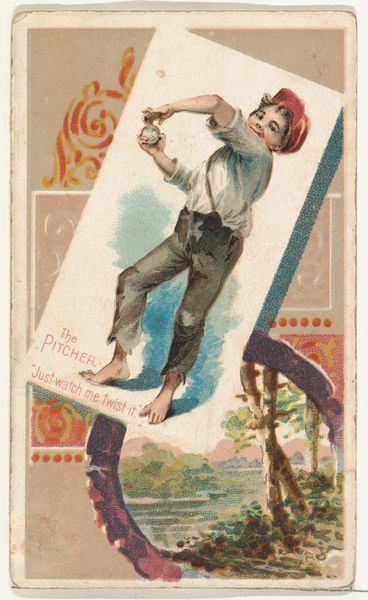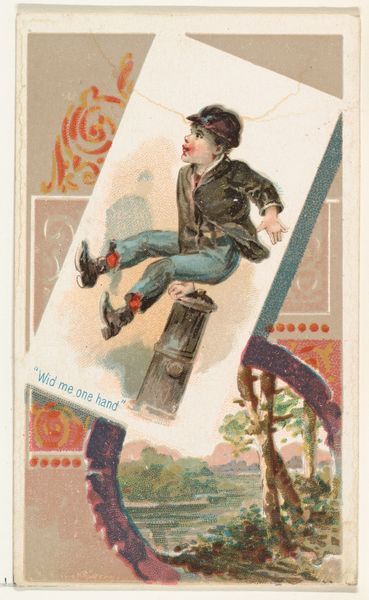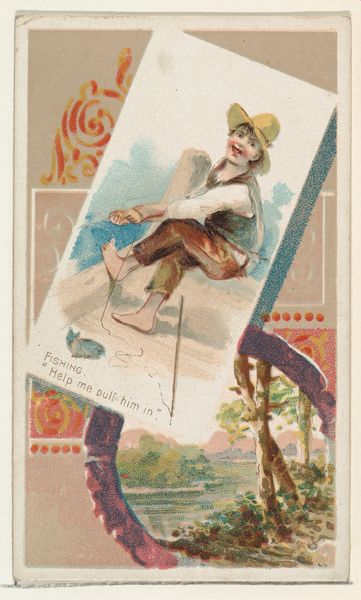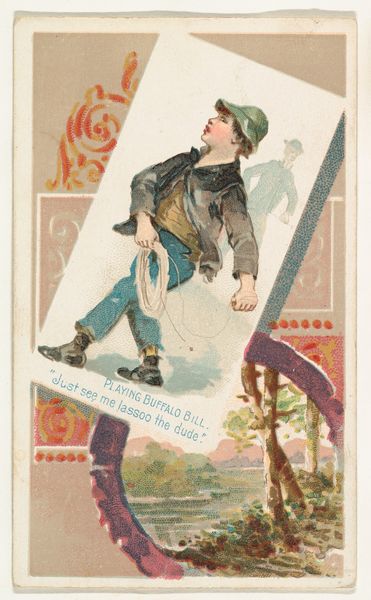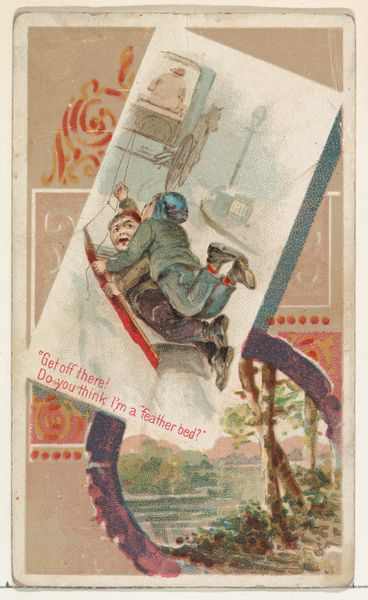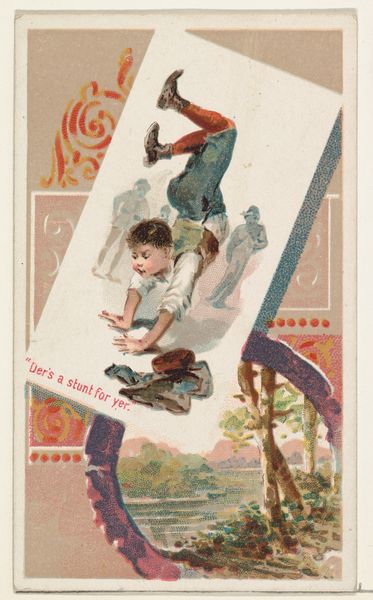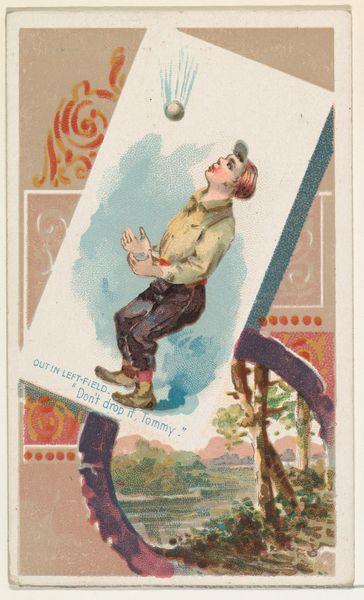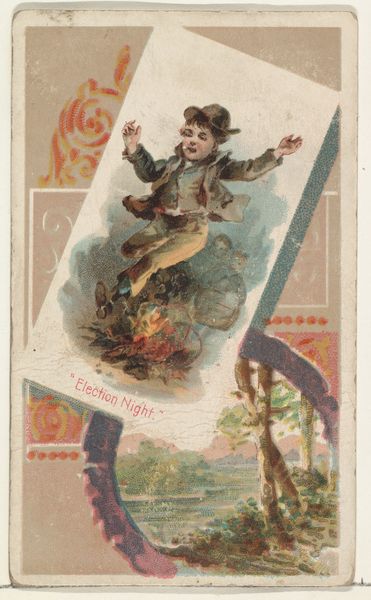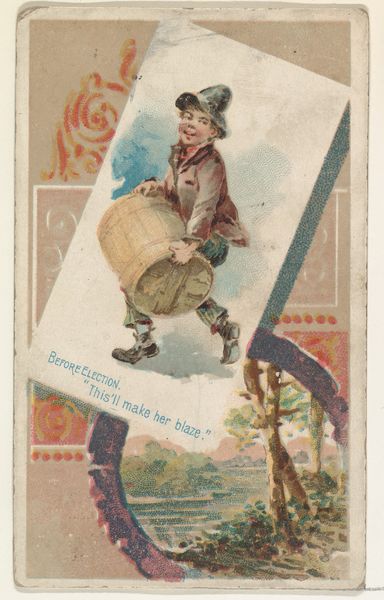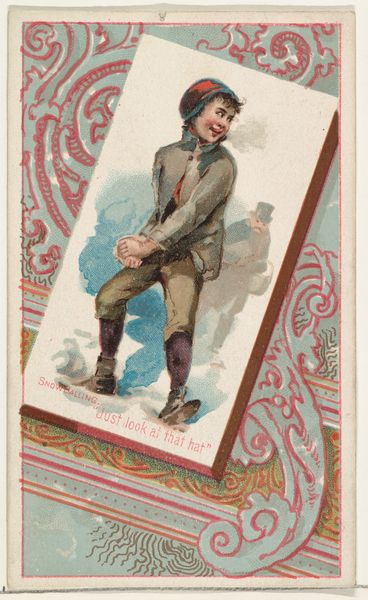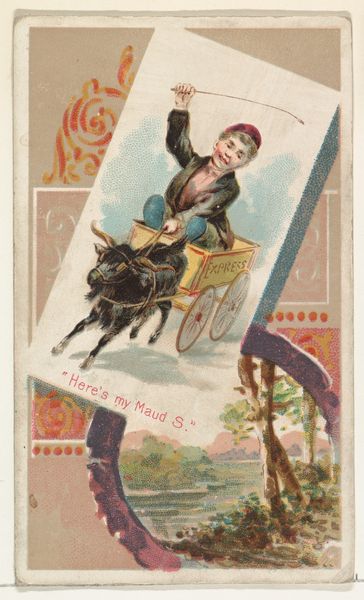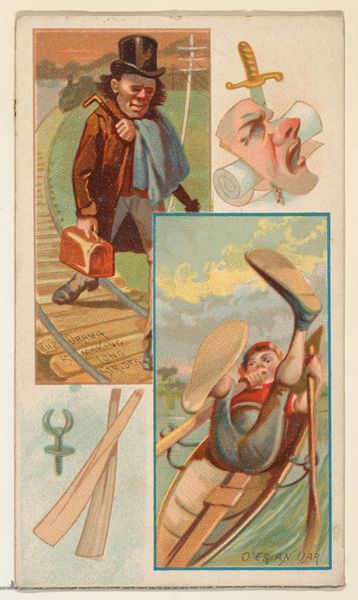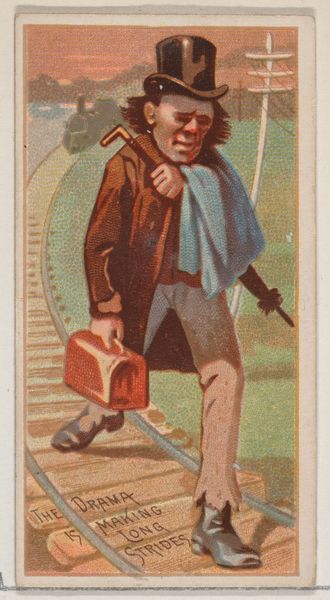
"Missus, lem'me clean it for a quarter?," from the Terrors of America set (N136) issued by Duke Sons & Co. to promote Honest Long Cut Tobacco 1888 - 1889
0:00
0:00
drawing, print, watercolor
#
drawing
#
pasteup
#
water colours
#
narrative-art
# print
#
impressionism
#
watercolor
#
men
#
watercolour illustration
Dimensions: Sheet: 2 3/4 x 1 1/2 in. (7 x 3.8 cm)
Copyright: Public Domain
Curator: I’m drawn to the almost dreamy, slightly off-kilter atmosphere of this image. It’s called “Missus, lem'me clean it for a quarter?,” part of the Terrors of America set from around 1888 or 1889, produced by W. Duke, Sons & Co. Editor: My immediate impression is of its curious construction, its almost haphazard placement on the card—a boy depicted with a direct gaze toward a patron or some imposing figure, positioned in front of a painted backdrop suggestive of affluence and power. Curator: Exactly! It’s like a vignette, almost theatrical, that seems both sweet and quietly melancholic. The way the watercolor gives this ordinary, even desperate scene a kind of gilded aura, it reminds me of those moments of forced optimism, putting on a brave face even when the situation is obviously hard. Editor: Yes, I agree. Let's look closer. Here's the Duke company using child labor as a commercial ploy in the same breath that its business relies on human labor: it commodifies the kid himself while hawking products dependent on industrial processes and access to consumer markets. These cards turn real-life terror into a momentary collectible. Curator: You've put your finger on it! Each "terror" subtly reminds the consumer of what they ostensibly have—domestic comforts that ostensibly differentiate them from the realities outside the domestic interior and its privileges. This card lets you hold the "other" in your pocket. The colors though... that watery wash over the figure almost elevates his plea. Is he an intrusion, or an icon? Editor: Both, probably! But note too how each one would have been cut and handled, made almost like a disposable thing itself... this artwork mirrors something crucial: art, like work, can mask or lay bare our human ties. I mean, each labor feeds off of another for visibility. Curator: So true. It also prompts me to think: What kind of world did this boy inherit? One defined by this exchange... A strange kind of immortality in commerce, capturing forever this transaction of daily life, then as now. Editor: Agreed, which asks if we should look again, see again—this isn’t just some fleeting snapshot. This single drawing, meant for commerce and circulation, carries heavy questions.
Comments
No comments
Be the first to comment and join the conversation on the ultimate creative platform.
